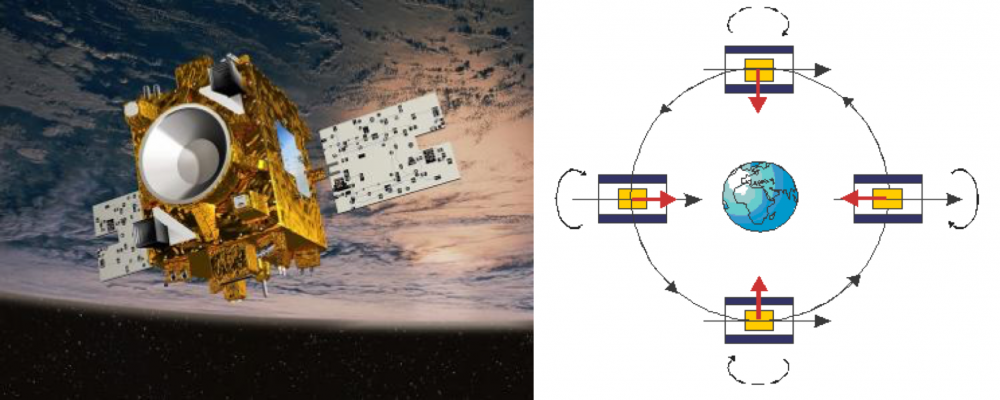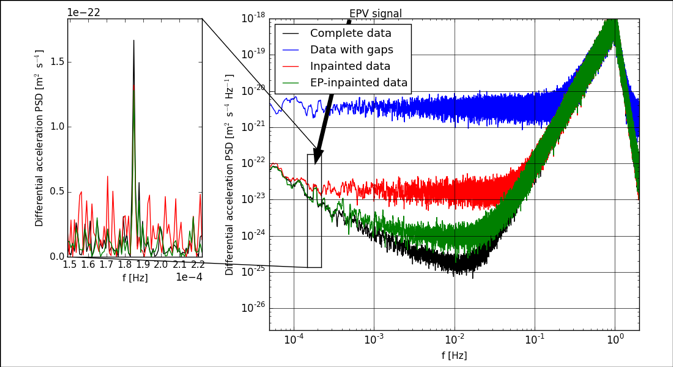Testing the equivalence principle, a fundamental principle of the general relativity developed by Albert Einstein from which the universality of free fall derives, that is the challenge undertaken by the Microscope spacecraft. The Microscope space mission, founded and operated by the CNES, The Microscope space mission, founded and operated by the CNES, designed by ONERA in collaboration with Observatoire de la Cote d’Azur, CNES and ZARM (Bremen, Germany), was launched on April 25, 2016 with a single scientific instrument on board: the T-sage instrument developed by ONERA. In a study published in the journal Classical and Quantum Gravity, the Microscope team in which a researcher of the Département d’Electronique des Détecteurs et d’Informatique pour la Physique/Laboratoire AIM of the CEA-Irfu Paris-Saclay is participating, verified the validity of the equivalence principle with unprecedented precision. By taking into account carefully the noise sources, benefiting from a good knowledge of the instrument and using innovative tools such as those used in astrophysics, the team has been able to improve by a factor of 10 the previous measurement, making the previously published results more robust and consolidating the validity of the Equivalence principle.
The Microscope satellite (MICROSatellite à trainée Compensée pour l’Observation du Principe d’Équivalence) aims at testing the equivalence principle who states that, in a vacuum with an uniform gravitational field, all the bodies fall with the same acceleration whatever their mass or composition. This principle stated by Galileo since the 17th century is the foundation of General Relativity published in 1915. Since 400 years, this principle remains valid and has been verified with increasing precision. The evidence of a violation of this principle would result in questioning the standard model of Physics. Therefore, the stakes are very high. Before the launch of the Microscope space mission, the validity of the equivalence principle was measured on the ground with a precision of 10-13. However, most of the theory who attempt to unify the 4 fundamental forces including gravity (e.g. quantum gravity models) predict a possible violation of the equivalence principle at lower range. Therefore, a confirmed violation of the Equivalence principle will result in a revolution in Physics. The Microscope mission is carried out in space in a spacecraft orbiting around the Earth to benefit from time measurements of several days. Thus, the 120 orbits of the mission are equivalent to a free fall from a height of “4 million of kms” aiming at achieving a level of precision 100 times greater than any experiment yet performed on Earth and allowing for new constrains on quantum gravity models.

On the left, an artist’s view of the Microscope spacecraft (image credit: CNES). On the left, a schematic view of the experimental concept of the mission based on the measurement of the relative motion of two different masses located inside the spacecraft orbiting around the Earth (image credit: ONERA, see here for more details).
The Microscope mission embarks two ultra-sensitive differential accelerometers, each of these consisting of two coaxial cylindrical test masses. As the spacecraft orbits around the Earth, masses are in continuous free fall allowing for equivalence principle testing. The first accelerometer serves as a reference to control systematic errors: its test masses are made of the same material (Platinum alloy). The second accelerometer is to test the equivalence principle, the masses are made of different materials (one in Titanium alloy and the other one in Platinum alloy) which allows to detect a possible equivalence principle violation by measuring the difference of acceleration between the two different masses. In Microscope, the science data consists of time series corresponding to the acceleration applied as a function of time to the masses to keep them relatively motionless along their orbits around the Earth. The equivalence principle violation measurement is performed on the difference of the acceleration between the two masses. For this purpose, a signal (namely differential) needs to be detected at the orbital frequency on the data coming from the test accelerometer made with different materials and not be detected in the reference accelerometer.
In order to reach the expected precision, it is essential to understand perfectly all systematic effects that can induce perturbations in the data. Among these perturbations, there is in particular those caused by the imperfection of the instrument that can be finely modelled and calibrated as well as the unpredictable events inside or outside the spacecraft requiring to remove some data points. In addition, the data are corrupted by a strongly coloured noise due to electronics that impacts mainly the high frequencies. All these effects have an impact on the quality of the measurements in terms of accuracy and precision. In this context a researcher of the AIM laboratory has contributed to the data processing of the mission. Building on its expertise on the development of data processing methods for astrophysics (in particular for the production of weak lensing dark matter maps), she has contributed to improve this processing chain.
This work results from a collaboration between AIM and ONERA laboratories initiated in 2014, with an exploratory project founded by the Labex UnivEarthS. The goal of the project was to find the best solution to deal with the problem of missing data in Microscope, in particular due to the strongly colored noise. The missing data in Microscope are of two types: true missing data due to telemetry losses and data that are removed (i.e. masked) from the measured time series because they are corrupted by external events, such as impacts by micrometeorites or crackles of the satellite’s coating. The presence of missing or masked data in colored noise data tend to increase significantly the noise level around the orbital frequency, reducing the precision with which the equivalence principle can be measured (see Figure below). An interpolation method called inpainting-MCA has been integrated into the official MICROSCOPE data processing and analysis pipeline to deal with these missing data. Application to Microscope data required an adaptation of the algorithms in order to handle colored noise. This method that is based on new representations of the data allows for a considerable noise reduction where we expect a possible equivalence principle violation (see Figure below).

Frequency representation of the differential signal: The blue and dark lines show respectively the noise model with and without missing data, before launch. The green and red lines show the results obtained with two different methods of inpainting-MCA. An example of a possible equivalence principle violation signal of 3x10-15 is shown by the peak at 1.8x 10-4 Hz.
Beyond the Microscope mission, the inpainting-MCA algorithms have already been integrated in other data processing chains by AIM researchers. These methods have been integrated into the data processing pipeline of the mission CoRoT. They are also being integrated in the data processing pipeline of the Euclid mission (planned to be launched in 2022). An ongoing study conducted by researchers of AIM (LCS laboratory), ONERA and Goddard Space Flight Center of the NASA also investigates a possible application of these methods to the data of the LISA mission. The final goal of the Microscope mission is to improve the results presented here by a factor of 10 using the totality of the data obtained during the mission and innovative data analysis methods. With a precision of 10-15, the space mission Microscope will allow for a precision 100 times greater than the precision of the experiments performed on Earth or by shooting laser beams at the moon.
Contact CEA : Sandrine Pires
Publications : This work is published in the journal Classical and Quantum Gravity
"Space test of the Equivalence Principle: first results of the MICROSCOPE mission", P. Touboul, G. Metris, M. Rodrigues, Y. André, Q. Baghi, J. Bergé, D. Boulanger, S. Bremer, R. Chhun, B. Christophe, V. Cipolla, T. Damour, P. Danto, H. Dittus, P. Fayet, B. Foulon, P.-Y. Guidotti, E. Hardy, P.-A. Huynh, C. Lämmerzahl, V. Lebat, F. Liorzou, M. List, I. Panel, S. Pires, B. Pouilloux, P. Prieur, S. Reynaud, B. Rievers, A. Robert, H. Selig, L. Serron, T. Sumner, P. Viesser, accepted in CQG, September 2019
See also :
The website Microscope à l'ONERA
The website Microscope au CNES
Rédaction : S. Pires, C. Gouiffès
• Structure et évolution de l'Univers Thèmes de recherche du Service d'astrophysique
• Institute of Research into the Fundamental Laws of the Universe • Department of Astrophysics (DAp) // UMR AIM • The Electronics, Detectors and Computing Division
